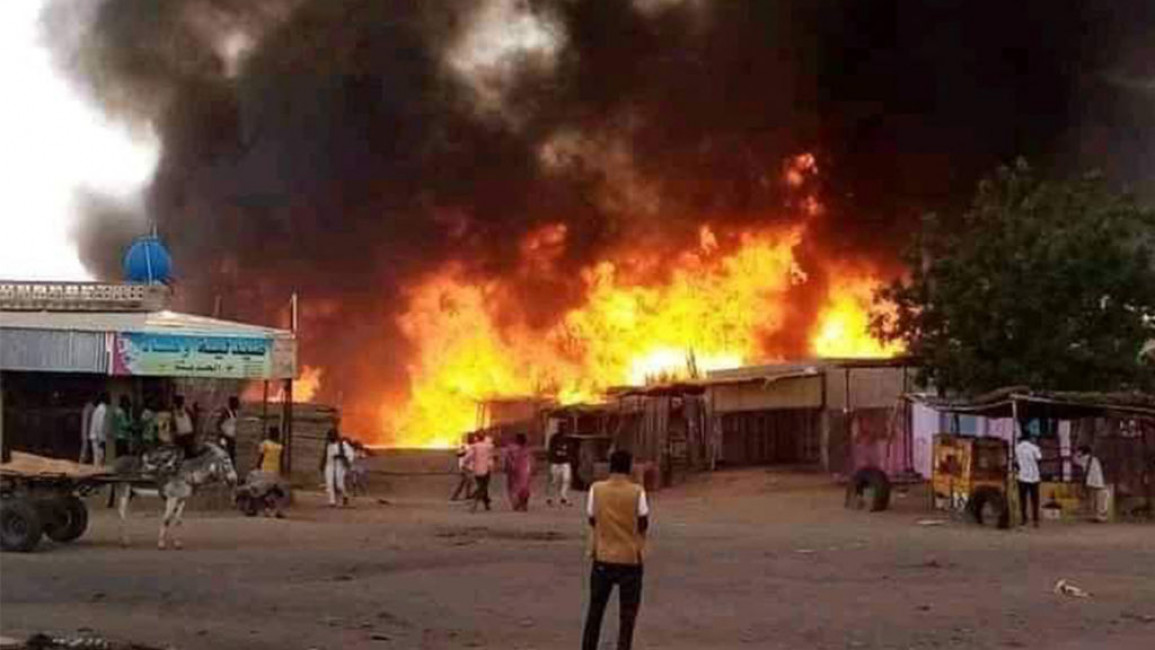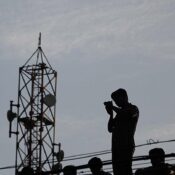
The final Darfur resistance in the Sudanese army falls apart
A peace that had shielded the Sudanese city of al-Fashir from a year-long conflict has been broken by attacks in the area, raising concerns about fresh intercommunal violence and potential humanitarian crises for the 1.6 million people living in the capital of North Darfur.
In the wide Western Darfur region, Al-Fashir is the last major city not ruled by the paramilitary Rapid Support Forces (RSF). After storming through four more Darfur state capitals last year, the RSF and its supporters were held accountable for a wave of abuses and racially motivated killings in West Darfur against non-Arab populations.
According to locals, aid organizations, and analysts, the battle for al-Fashir, a historically significant center of power, may last longer, exacerbate ethnic tensions that arose during the violence in the region in the early 2000s, and extend beyond Sudan’s border with Chad.
Approximately 500,000 people were displaced from Al-Fashir during the last conflict, which saw the army put down a non-Arab rebel group uprising with the help of Arab militias that later became the RSF.
As long-simmering tensions about integrating the two forces reached a climax, around half a million more people migrated into the city during the war that broke out between the army and the RSF in the capital Khartoum in April 2023.
Local authorities mediated a truce in al-Fashir while the war extended to other regions of the nation, confining the RSF to the eastern parts of the city while the previous rebel factions maintained their neutrality.
However, the plan collapsed when the RSF captured Melit this month, so blocking al-Fashir.
Unlike other state capitals when soldiers swiftly departed, witnesses report that the army has increased supplies and personnel, even dropping troops into the city by air.
The Sudan Liberation Army (SLA) led by Minni Minawi and the Justice and Equality Movement led by Jibril Ibrahim declared that they will also fight the RSF.
A great deal of non-Arabs in al-Fashir are terrified.
The 39-year-old resident Mohamed Gasim told Reuters over the phone, “We don’t know what to do.” “Al-Fashir is dangerous, but leaving is more dangerous.”
As early as the truce’s failure, Ismail Khareef, an activist in Abu Shouk, one of the several displacement camps scattered throughout the city, claimed that over 220 people had been killed in fights in al-Fashir in the previous year.
According to Khareef, at least 18 people died in clashes on April 16. Both he and other locals claim that homes have been hit by gunfire and projectiles, some of which have come from army jets.
According to satellite footage obtained by the Yale Humanitarian Research Lab, at least 11 communities on the outskirts of al-Fashir have been completely destroyed since the beginning of the month. The UN says there have been at least 36,000 displaced people.
A spokesman for the SLA and local activists placed the responsibility on the RSF and affiliated militias, who have a history of using arson in attacks, including ones that occurred in West Darfur. According to survivors of the attacks, the attackers used ethnic insults, and the activists said that about ten individuals were slain.
The RSF said it was taking care to keep fighting away from people in the city and denied targeting al-Fashir, accusing the army and its allies of striking it from the suburbs. Prior to now, the RSF had denied any involvement in the ethnic conflict in Darfur.
Requests for comment were not immediately answered by the army.
Speaking to Reuters from the city where few foreign humanitarians remain, Awadalla Hamid, Darfur director for Practical Action, stated that Al-Fashir itself has not had operational running water or power lines for a year. According to him, there is just one public hospital in operation, and displaced individuals are housed in overcrowded public spaces like schools.
All-out warfare “risks already complicating further humanitarian access, at a time when available data shows al-Fashir is suffering from an extremely serious food crisis,” according to Jerome Tubiana, a Darfuri expert and advisor to the medical charity MSF.
Only limited amounts of relief have reached al-Fashir, the only army-approved route for supplies to other regions of Darfur, since the start of the conflict. Although markets are operating, locals claim that the RSF’s control of the main route has led to skyrocketing costs for gasoline, water, and other supplies.
Concerns about a larger spillover have also been raised by the recent tensions and bloodshed around al-Fashir.
The Zaghawa tribe, which includes Chadian leader Mahamat Idriss Deby as a member, is the source of the previous rebel organizations fighting alongside the army. The Zaghawa tribe extends across the border into Chad.
For a considerable time, Darfur has seen conflicts between Arab and non-Arab tribes, such as the Zaghawa, over territory and important resources.
Adding to the complexity is the arrival of Musa Hilal’s soldiers, a prominent Arab commander from the early 2000s who, although descended from the same tribe, is an adversary of RSF commander Mohamed Hamdan Dagalo, also known as Hemedti. Although Hilal was seen on camera on Monday addressing forces in North Darfur, a spokesman claimed it was too soon to determine whether or not the forces would take part in the fighting in al-Fashir.
“This is much beyond Saf and RSF, even in the event of a ceasefire. Tensions are rising again, and scores are being settled, according to independent Sudan analyst Jonas Horner.
All Categories
Recent Posts
Tags
+13162306000
zoneyetu@yahoo.com



